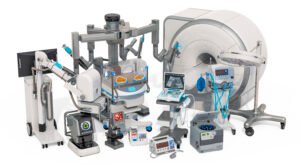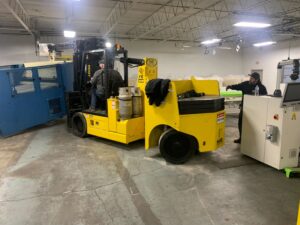Industrial fabrication is a cornerstone of modern manufacturing, encompassing a diverse range of processes and materials to create everything from structural components to intricate machinery parts. However, this sector is not without its challenges. In this comprehensive guide, we’ll delve into the top challenges faced by industrial fabricators and explore effective strategies to overcome them.
Material Selection and Sourcing
Challenge: Choosing the right materials for a fabrication project can be daunting, considering factors such as strength, durability, cost, and availability.
Strategies to Overcome:
- Conduct thorough research to understand the specific requirements of the project.
- Collaborate closely with material suppliers to explore options and obtain samples for testing.
- Utilize material databases and industry standards to make informed decisions.
- Consider factors like environmental impact, regulatory compliance, and end-user preferences.
Precision and Tolerance Control
Challenge: Achieving precise dimensions and tolerances is essential in industrial fabrication, yet it poses significant challenges due to factors like material properties, machine capabilities, and environmental conditions.
Strategies to Overcome:
- Invest in high-precision machining equipment and technologies.
- Implement robust quality control measures, including regular calibration and inspection.
- Utilize advanced software for CAD/CAM design and simulation to anticipate and mitigate potential issues.
- Train personnel rigorously on proper machining techniques and quality assurance protocols.
Welding and Joining Challenges
Challenge: Welding and joining processes are integral to many fabrication projects but can present challenges such as distortion, porosity, and metallurgical issues.
Strategies to Overcome:
- Choose welding techniques and consumables tailored to the specific materials and application.
- Optimize welding parameters, including heat input, travel speed, and shielding gas composition.
- Pre-plan and execute proper joint preparation and fit-up procedures.
- Implement post-weld heat treatment or stress-relieving processes as needed.
Surface Finish and Coating
Challenge: Achieving the desired surface finish and applying protective coatings can be challenging due to factors like material compatibility, substrate preparation, and environmental conditions.
Strategies to Overcome:
- Develop comprehensive surface preparation protocols, including cleaning, degreasing, and surface profiling.
- Select appropriate coating materials and application methods based on environmental exposure and performance requirements.
- Invest in advanced surface treatment technologies such as abrasive blasting, chemical etching, and thermal spraying.
- Establish stringent quality control measures to ensure coating thickness, adhesion, and uniformity.
Supply Chain Disruptions
Challenge: Supply chain disruptions, whether due to natural disasters, geopolitical events, or unexpected demand fluctuations, can significantly impact fabrication projects, leading to delays and cost overruns.
Strategies to Overcome:
- Diversify supplier relationships to minimize reliance on single sources.
- Maintain adequate inventory levels of critical materials and components.
- Implement robust risk management strategies to anticipate and mitigate potential disruptions.
- Foster open communication and collaboration with suppliers to address challenges proactively.
Regulatory Compliance and Standards
Challenge: Adhering to stringent regulatory requirements and industry standards is essential in industrial fabrication but can be complex and time-consuming to navigate.
Strategies to Overcome:
- Stay informed about relevant regulations and standards governing materials, processes, and product specifications.
- Establish a comprehensive compliance management system, including documentation, training, and audits.
- Engage with industry associations, regulatory agencies, and certification bodies to seek guidance and stay updated on best practices.
- Leverage technology solutions such as compliance software and automation tools to streamline processes and ensure adherence.
Conclusion
Industrial fabrication is a dynamic and demanding field that requires meticulous attention to detail, advanced technologies, and strategic problem-solving. By understanding and addressing the top challenges faced in this industry, fabricators can enhance efficiency, quality, and overall project success. With proactive planning, collaboration, and innovation, these challenges can be overcome, paving the way for continued growth and advancement in industrial fabrication.
























